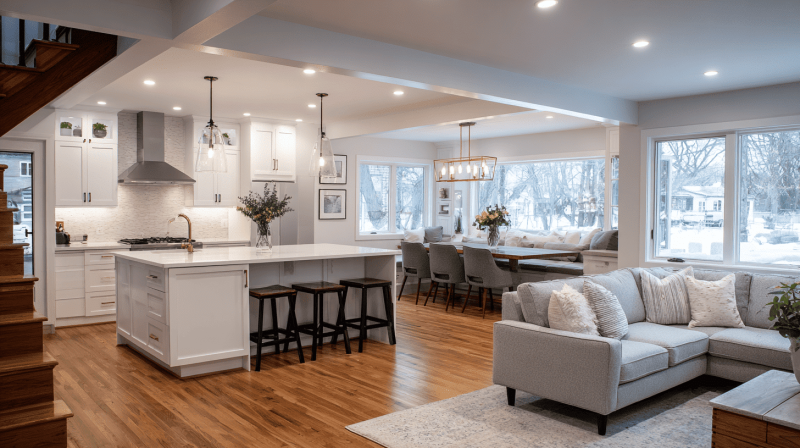The kitchens of split-level homes can often feel cramped and outdated.
The awkward layouts, low ceilings, and disconnected spaces make cooking and entertaining a real challenge. Many homeowners feel stuck with their split-level kitchen’s odd angles and limited flow.
Let me tell you, your split-level kitchen has so much potential.
With the right design choices and smart layout solutions, you can remodel that cramped space into a functional, beautiful heart of your home.
In this blog, I’ll share proven split-level home kitchen remodel design ideas and layout solutions. I’ll share budget-friendly tips that deliver maximum impact.
Split-Level Kitchens Explained in Simple Terms
A split-level home’s kitchen is set between two floors, often with stairs leading up to a dining area or down to a family room.
These kitchens don’t always follow the usual design rules. Many have odd angles, tight layouts, and low ceilings, which can make them feel claustrophobic. Windows are often small, so natural light can be limited. You may also need to work around beams or walls that can’t be moved.
Knowing these challenges early helps you plan smart. With the right design choices, you can make the space brighter, more open, and practical.
Key Planning Considerations for Split-Level Home Kitchen Remodel
Planning a split-level kitchen remodel needs careful thought. Here are the key steps to ensure your project runs smoothly.
- Set a realistic budget with a 20% buffer for unexpected issues
- Decide between DIY tasks and professional contractor work
- Check local permit requirements for structural changes
- Plan for a 6-12 week timeline, depending on project scope
- Consider how construction will affect daily kitchen use
Step-by-Step Plan for Remodeling
A split-level remodel feels easier when you follow a plan. These simple steps help you organize your ideas, manage costs, and design a kitchen that suits your home.
Step 1: Assess Your Current Space
Measure every wall, ceiling height, and window. Note which walls are load-bearing, where plumbing runs, and where electrical outlets are located. Document what you absolutely cannot move.
Step 2: Define Your Goals
Create two lists: must-haves, such as more storage or better lighting, and nice-to-haves, like a kitchen island. This helps you prioritize when the budget gets tight.
Step 3: Set Your Budget
Research local costs for cabinets, countertops, appliances, and labor to determine the most cost-effective options. Get quotes from contractors. Add 20% extra for unexpected surprises that often arise during remodels.
Step 4: Create Your Design
Sketch different layout options or hire a designer. Focus on maximizing your split-level’s unique space while improving traffic flow between different floor levels.
Step 5: Schedule the Work
Book reliable contractors early and order materials with lead times in mind to ensure timely completion. Coordinate delivery dates so everything arrives when needed, not before you’re ready.
By breaking the process into clear steps, you reduce stress and stay focused. With careful planning and smart choices, your split-level kitchen remodel will feel manageable and rewarding.
Split-Level Home Kitchen Remodel Ideas
Remodel your split-level kitchen from cramped and outdated to functional and stylish with these proven remodel ideas that work perfectly with your home’s unique layout.
1. Open Concept Conversion
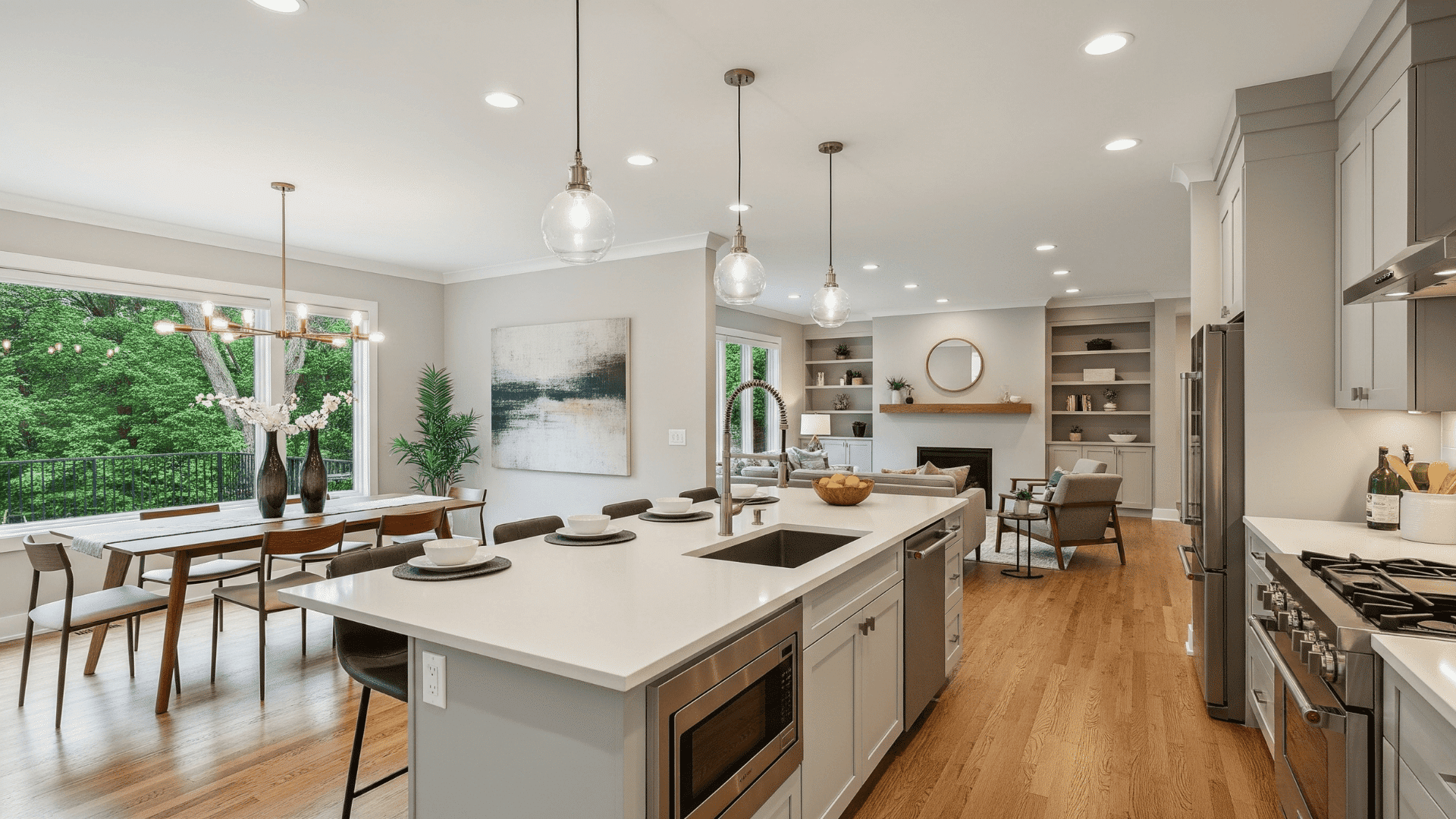
Remove non-load-bearing walls between your kitchen and adjacent rooms to create a smoother flow.
This works especially well in split-levels where kitchens often feel isolated.
You’ll gain visual space and improve the connection between different floor levels, making your entire main level feel larger and more inviting for family gatherings.
- Cost overview: $3,000-$8,000 (approx.) for wall removal
- Material: Drywall repair, flooring transition strips
- Quick Tip: Check with a structural engineer first
2. Galley Kitchen Makeover
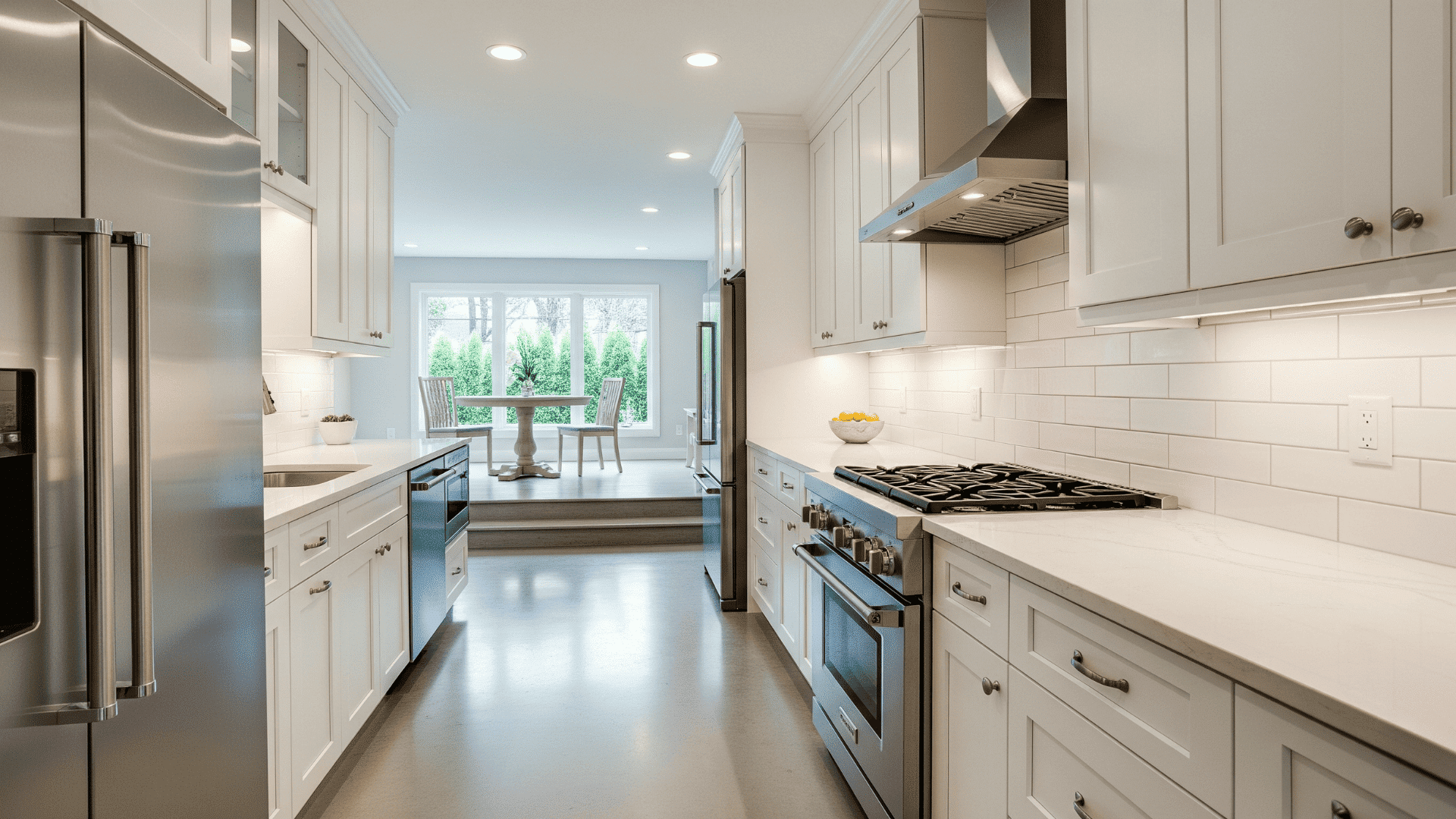
Many split-level kitchens are galley-style due to narrow spaces.
Maximize efficiency by installing floor-to-ceiling cabinets and using light colors to create the illusion of a wider corridor.
Add under-cabinet lighting and choose reflective surfaces, such as glossy tiles or stainless steel, to bounce light around the compact space.
- Cost overview: $15,000-$25,000 (approx.) complete renovation
- Material: Light-colored cabinets, LED strip lighting
- Quick Tip: Use mirrors to create an illusion of width
3. Kitchen Island Addition
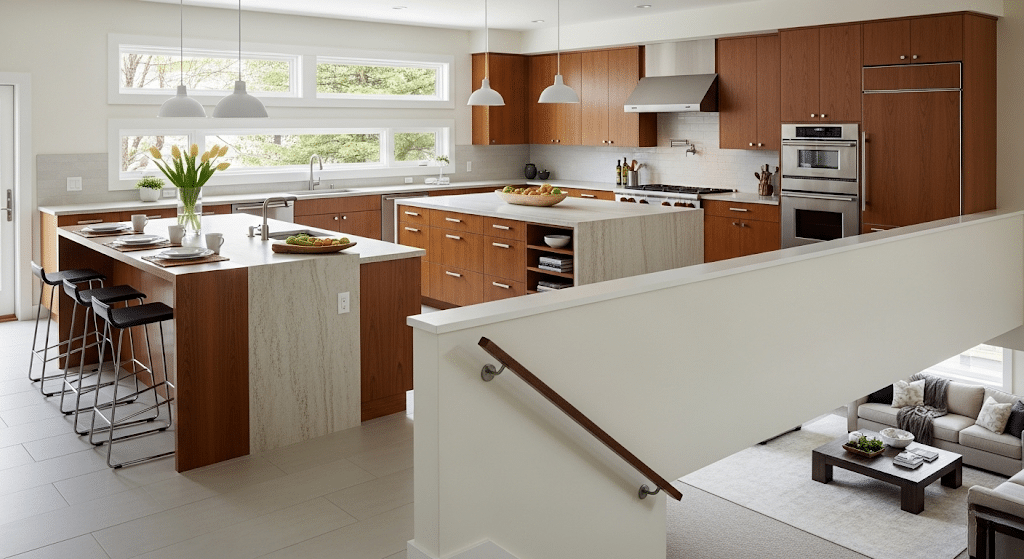
A kitchen island that doubles as a breakfast bar creates natural separation between levels while providing extra counter space and storage.
Select an island height that accommodates both cooking preparation and casual dining.
- Cost overview: $2,000-$7,000 (approx.) depending on size
- Material: Butcher block or quartz countertop
- Quick Tip: Ensure 36-inch walkway clearance around the island
4. Two-Tone Cabinet Design
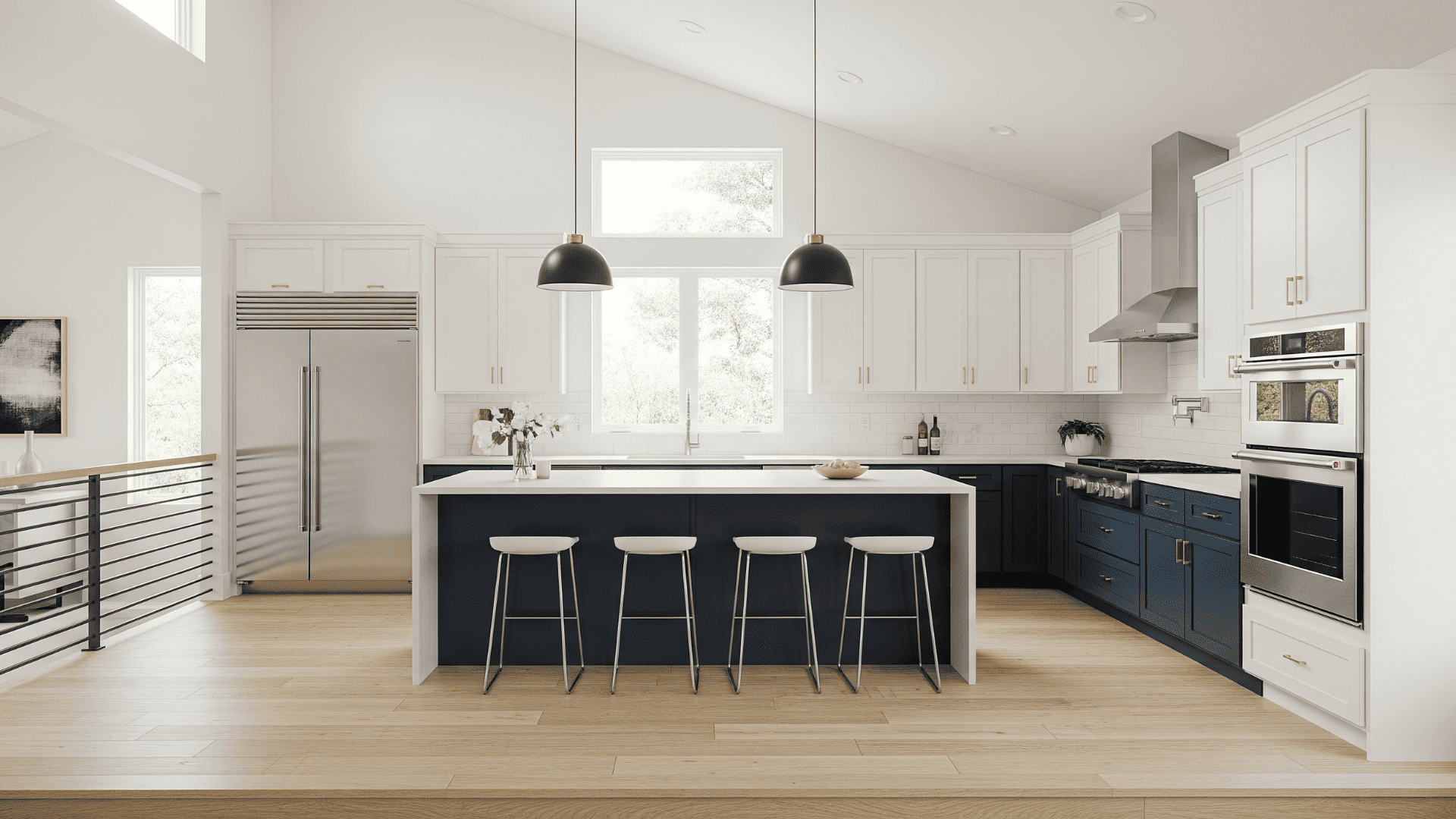
Combat the closed-in feeling of split-level kitchens by using lighter upper cabinets and darker lower ones.
This draws the eye upward, making low ceilings appear higher.
White or cream uppers paired with navy or charcoal lowers create a modern, spacious feel.
- Cost overview: $8,000-$15,000 (approx.) for cabinet painting/refacing
- Material: Semi-gloss paint, quality brushes, and rollers
- Quick Tip: Use the same hardware throughout for continuity
5. Strategic Lighting Upgrade
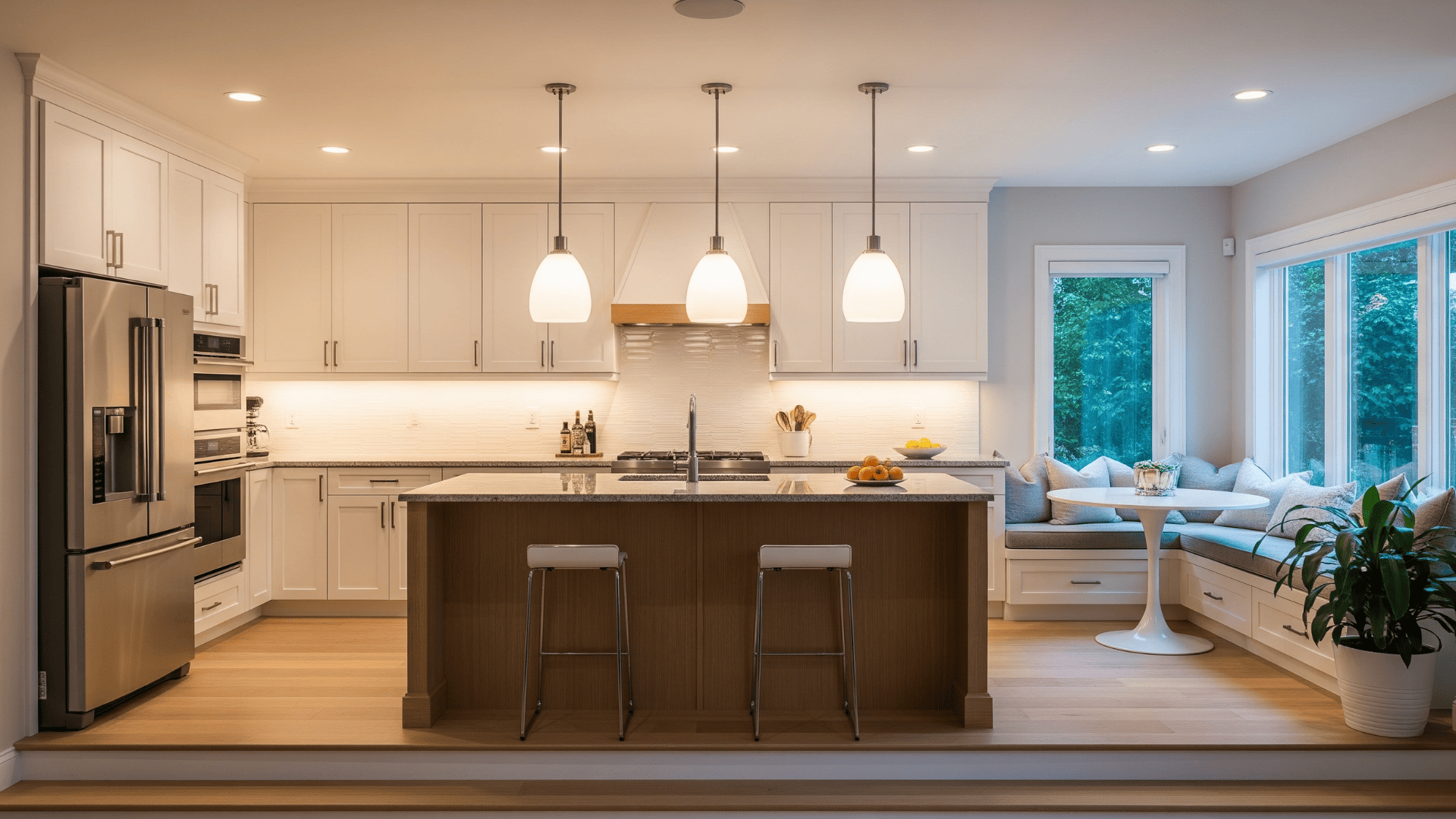
Split-level kitchens often lack natural light. Layer your lighting with recessed ceiling fixtures, under-cabinet strips, and pendant lights over eating areas.
This eliminates dark corners and makes the space feel larger and more welcoming, especially important with lower ceiling heights typical in split-levels.
- Cost overview: $1,500-$4,000 (approx.) for a complete lighting overhaul
- Material: LED recessed lights, pendant fixtures
- Quick Tip: Add dimmer switches for mood control
6. Breakfast Nook Creation
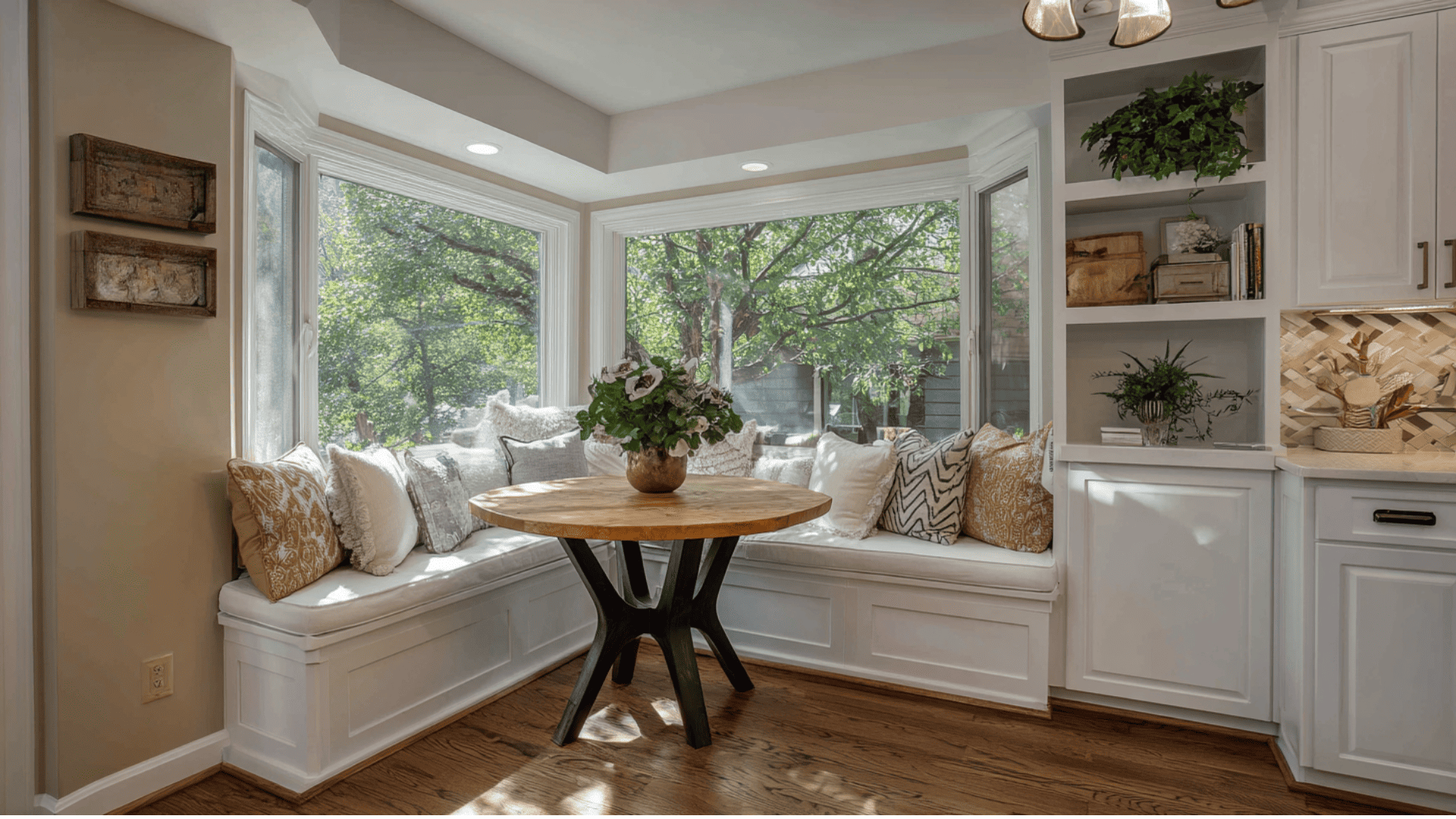
Utilize any alcove or corner space to create a cozy breakfast nook. Built-in bench seating with storage underneath maximizes the limited space of your split-level.
This works especially well near windows or in areas that connect to different floor levels of your home.
- Cost overview: $2,500-$5,000 (approx.) for built-in seating
- Material: Plywood, upholstery foam, fabric
- Quick Tip: Add cushions in washable fabrics
7. Backsplash Statement Wall
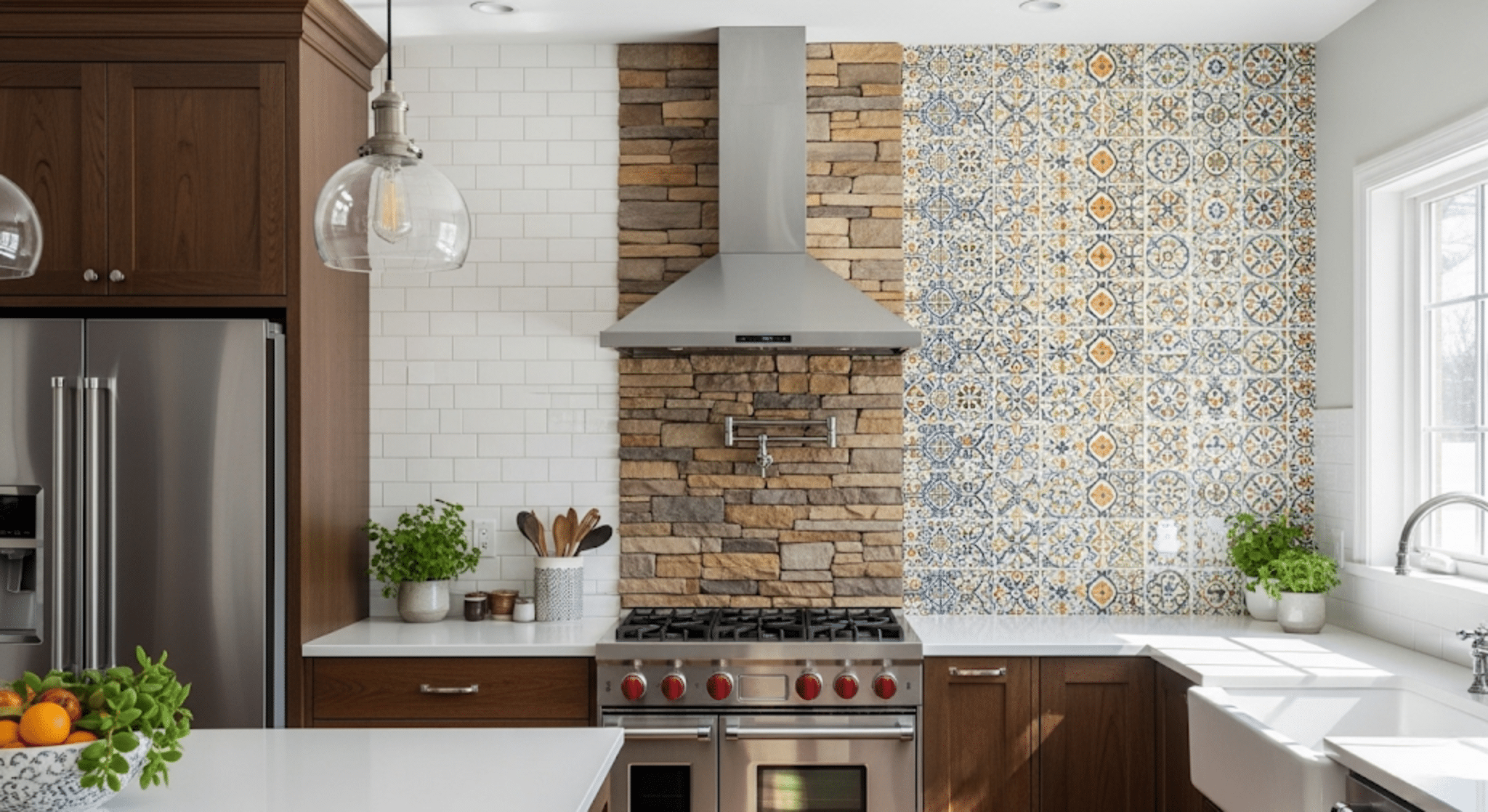
Make your split-level kitchen feel custom and high-end with a stunning backsplash. Subway tiles, natural stone, or colorful ceramics can completely change the room’s personality.
Extend the backsplash to the ceiling to add visual height and create a focal point that distracts from awkward angles.
- Cost overview: $800-$2,500 (approx.) depending on tile choice
- Material: Subway tile, natural stone, or ceramic
- Quick Tip: Use light grout to keep the look clean
8. Pantry Closet Conversion

Convert a nearby coat closet or small room into a walk-in pantry. Split-level homes often have odd little spaces that aren’t useful as-is but make perfect pantries.
Install adjustable shelving from floor to ceiling and add interior lighting to maximize storage in your compact kitchen area.
- Cost overview: $1,200-$3,000 (approx.) for closet conversion
- Material: Wire shelving systems, interior paint
- Quick Tip: Install door-mounted spice racks
9. Multi-Level Counter Heights
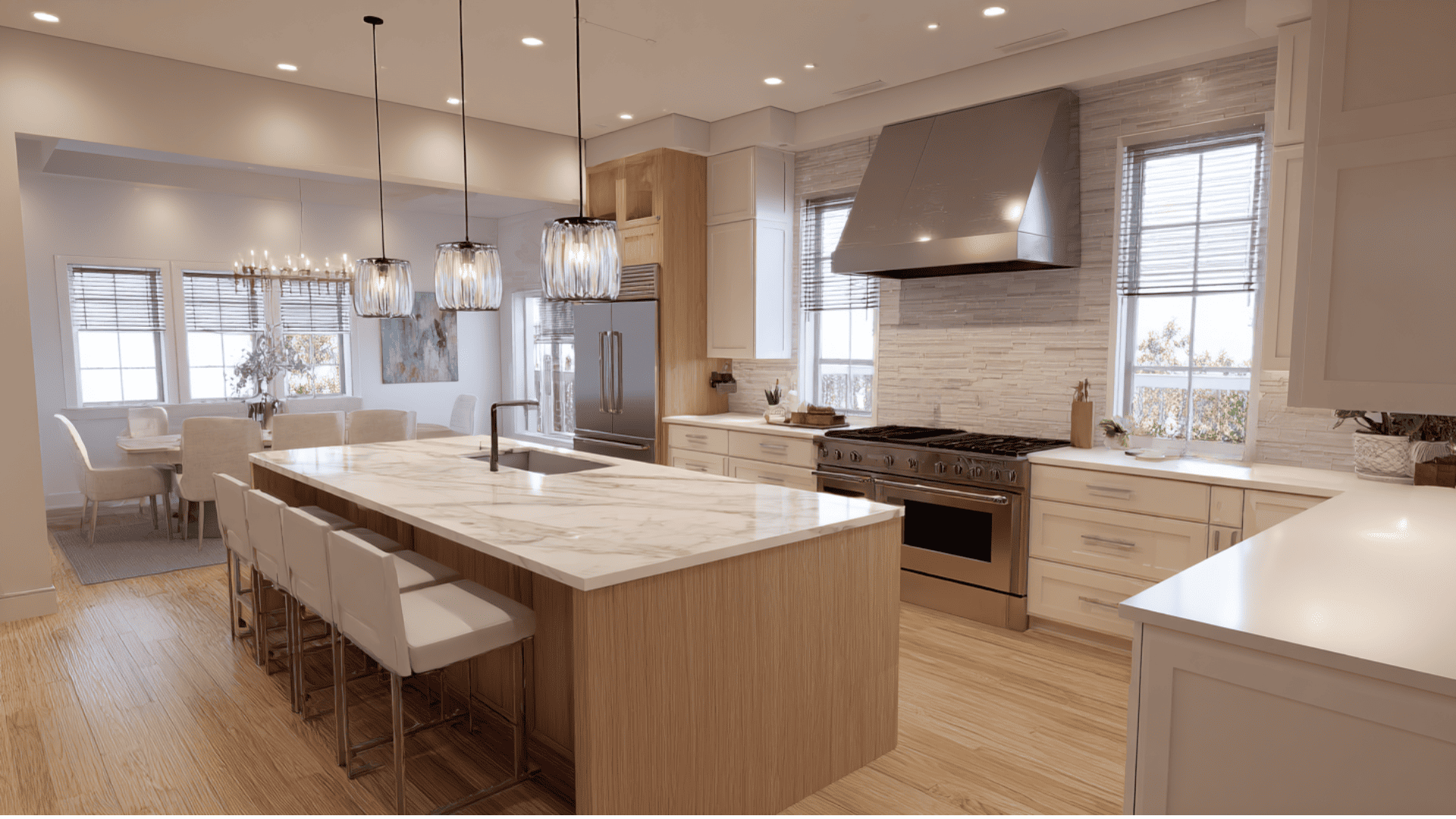
Use your split-level’s unique layout to your advantage by creating different counter heights.
Standard prep height for cooking, bar height for casual dining, and maybe a lower section for baking.
This adds visual interest and makes your kitchen more functional for different family members and activities.
- Cost overview: $3,000-$6,000 (approx.) for custom countertop work
- Material: Quartz or granite in matching patterns
- Quick Tip: Keep plumbing simple with a single-level sink area
Timeline for Split-Level Kitchen Remodel
Most split-level kitchen remodels take 8-12 weeks from start to finish, depending on the project scope and any necessary structural changes.
| Week | Phase | Key Activities |
|---|---|---|
| 1-2 | Planning & Permits | Finalize design, order materials, and get permits |
| 3 | Demo & Prep | Remove old cabinets, flooring, and fixtures |
| 4-5 | Structural Work | Electrical, plumbing, and any wall modifications |
| 6-7 | Installation | Drywall, flooring, and cabinet installation |
| 8-9 | Finishing | Countertops, backsplash, paint touch-ups |
| 10-11 | Appliances & Final | Install appliances, hardware, and final inspections |
| 12 | Cleanup & Setup | Deep clean, organize, and enjoy your new kitchen |
Note: Add extra time for custom orders or if you hit unexpected structural issues common in older split-level homes.
Budget-Friendly Advice
These budget-friendly tips deliver maximum impact without a complete renovation.
- Paint existing cabinets in light colors and add new hardware for instant remodeling
- Install peel-and-stick backsplash tiles for a fresh look without professional installation
- Replace cabinet doors only, keeping existing boxes to cut costs in half
- Add under-cabinet LED strip lighting to brighten dark corners and workspaces
- Swap out the old faucet and sink for modern stainless steel versions
Wrapping it up
Your split-level home kitchen remodel plan doesn’t have to stay stuck in the past.
With smart planning and the right design choices, you can turn those awkward angles and tight spaces into your home’s most functional room.
If you go for a complete renovation or budget-friendly updates, focus on maximizing light, improving flow, and working with your unique layout instead of fighting it.
Begin with that planning checklist and remember – even small changes can make a huge difference.


